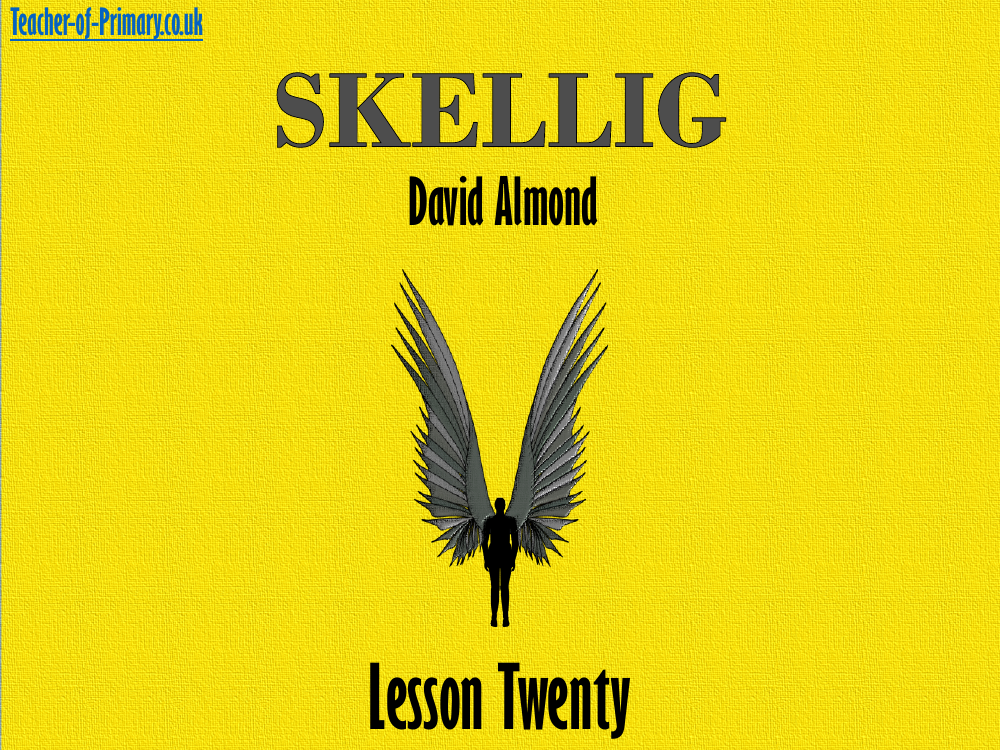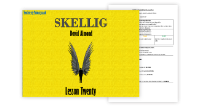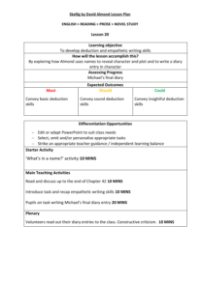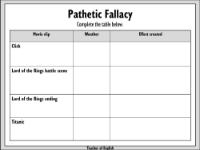Skellig Lesson 20: Pathetic Fallacy - PowerPoint

English Resource Description
In Lesson Twenty of a series on David Almond's 'Skellig', the objective is to explore the literary technique of pathetic fallacy and how it is used to enhance the narrative. Pathetic fallacy, the attribution of human emotions or characteristics to nature or inanimate objects, is a device commonly employed in various art forms to convey mood, express themes, or build suspense. The lesson includes a reading activity where students are directed to read up to the end of Chapter 41 of 'Skellig', and reflect on the events of the chapter and the accompanying weather conditions. Additionally, they read an extract from Mary Shelley's 'Frankenstein' to identify the use of weather in reflecting the narrator's emotions. This sets the stage for understanding how weather and atmosphere can be mirrored in a character's experiences.
Students are then shown examples of pathetic fallacy through movie clips, where they observe and explain the use of weather to create specific effects, such as a heavy rain scene in 'Click' that corresponds with a poignant moment or a bright, golden sunset in 'The Lord of the Rings' that symbolises hope. They complete a table, noting the weather and the effect created in each film scene. The lesson progresses by applying the concept to 'Skellig', asking students to consider how the weather described in Chapter 38 influences mood, atmosphere, character emotions, and plot hints. The students are tasked with writing a paragraph analysing Almond's use of pathetic fallacy in the chapter. The plenary involves volunteers reading their work aloud, with the class providing constructive feedback on the strengths and areas for improvement in their analyses.


